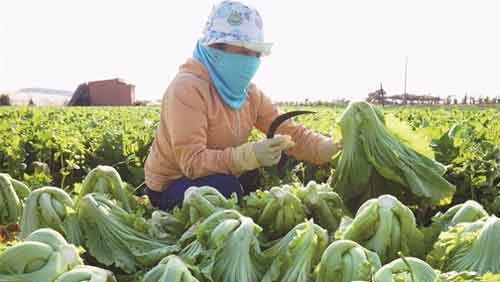Agriculture an attractive field for investors?
Tuesday, 16:10, 22/12/2015
Agriculture is an investment field which promises high risks but low profitability, just 3-4%.
Forty million dollars is the amount of money Cargill, the animal feed manufacturer from the US has announced it will inject more into Vietnam.
Chanh Truong, chief representative of Cargill Vietnam, said the money would be used to build an animal feed factory in Binh Duong province and build a grain storehouse in Phu My in a cooperation project with the Saigon International Terminal (SITV).
The move, in the eyes of analysts, has shown the big potential of the Vietnamese feed market. The market, which is worth US$6.22 billion, may be valued at US$10.55 billion, according to Grand View Research.
This is why a lot of investors, not only foreign ones, but domestic as well, such as Masan, Hoa Phat and Hung Vuong, have jumped into the market.
Hung Vuong last October announced the plan on pouring VND2 trillion into a project on pig farming and feed for pigs. The company plans to launch pork into the market by the third quarter of 2016 and provide 3 million pigs by 2018.

The agriculture and food sector has attracted a lot of big companies with powerful financial capability. Apart from Hung Vuong and Masan, which are food manufacturers, the sector has also lured Hoang Anh Gia Lai, Duc Long Gia Lai, PAN, Vingroup and Hoa Phat, originally real estate developers and steel manufacturers.
However, the presence of the giants in the agriculture sector are like ‘drops of water in the ocean’. A report showed that investment in agriculture just accounts for one percent of the total capital poured into the national economy.
The report released at a conference discussing the development of agriculture production in the TPP period also showed that the foreign direct investment (FDI) into the sector also accounts for some 1 percent of total FDI.
There are many reasons why investors hesitate to inject money into agriculture. According to Tran Hai Yen, an expert, it is now the age of large-scale agriculture production, which means the required investment capital is huge.
Hundreds and thousands of billions of dong are the amounts of money Masan, Vingroup, Hoa Phat, Hoang Anh Gia Lai, PAN and Hung Vuong have to spend to join the field.
Meanwhile, agriculture is a risky production field. Hoang Anh Gia Lai started its rubber cultivation projects in Laos and Cambodia in 2008, but the income from rubber just accounts for 7% of its total revenue in 2014.
The rubber latex price has plummeted dramatically to the level just equal to 1/5 of the price at the time when Hoang Anh Gia Lai kicked off its rubber projects.
Chanh Truong, chief representative of Cargill Vietnam, said the money would be used to build an animal feed factory in Binh Duong province and build a grain storehouse in Phu My in a cooperation project with the Saigon International Terminal (SITV).
The move, in the eyes of analysts, has shown the big potential of the Vietnamese feed market. The market, which is worth US$6.22 billion, may be valued at US$10.55 billion, according to Grand View Research.
This is why a lot of investors, not only foreign ones, but domestic as well, such as Masan, Hoa Phat and Hung Vuong, have jumped into the market.
Hung Vuong last October announced the plan on pouring VND2 trillion into a project on pig farming and feed for pigs. The company plans to launch pork into the market by the third quarter of 2016 and provide 3 million pigs by 2018.

However, the presence of the giants in the agriculture sector are like ‘drops of water in the ocean’. A report showed that investment in agriculture just accounts for one percent of the total capital poured into the national economy.
The report released at a conference discussing the development of agriculture production in the TPP period also showed that the foreign direct investment (FDI) into the sector also accounts for some 1 percent of total FDI.
There are many reasons why investors hesitate to inject money into agriculture. According to Tran Hai Yen, an expert, it is now the age of large-scale agriculture production, which means the required investment capital is huge.
Hundreds and thousands of billions of dong are the amounts of money Masan, Vingroup, Hoa Phat, Hoang Anh Gia Lai, PAN and Hung Vuong have to spend to join the field.
Meanwhile, agriculture is a risky production field. Hoang Anh Gia Lai started its rubber cultivation projects in Laos and Cambodia in 2008, but the income from rubber just accounts for 7% of its total revenue in 2014.
The rubber latex price has plummeted dramatically to the level just equal to 1/5 of the price at the time when Hoang Anh Gia Lai kicked off its rubber projects.
